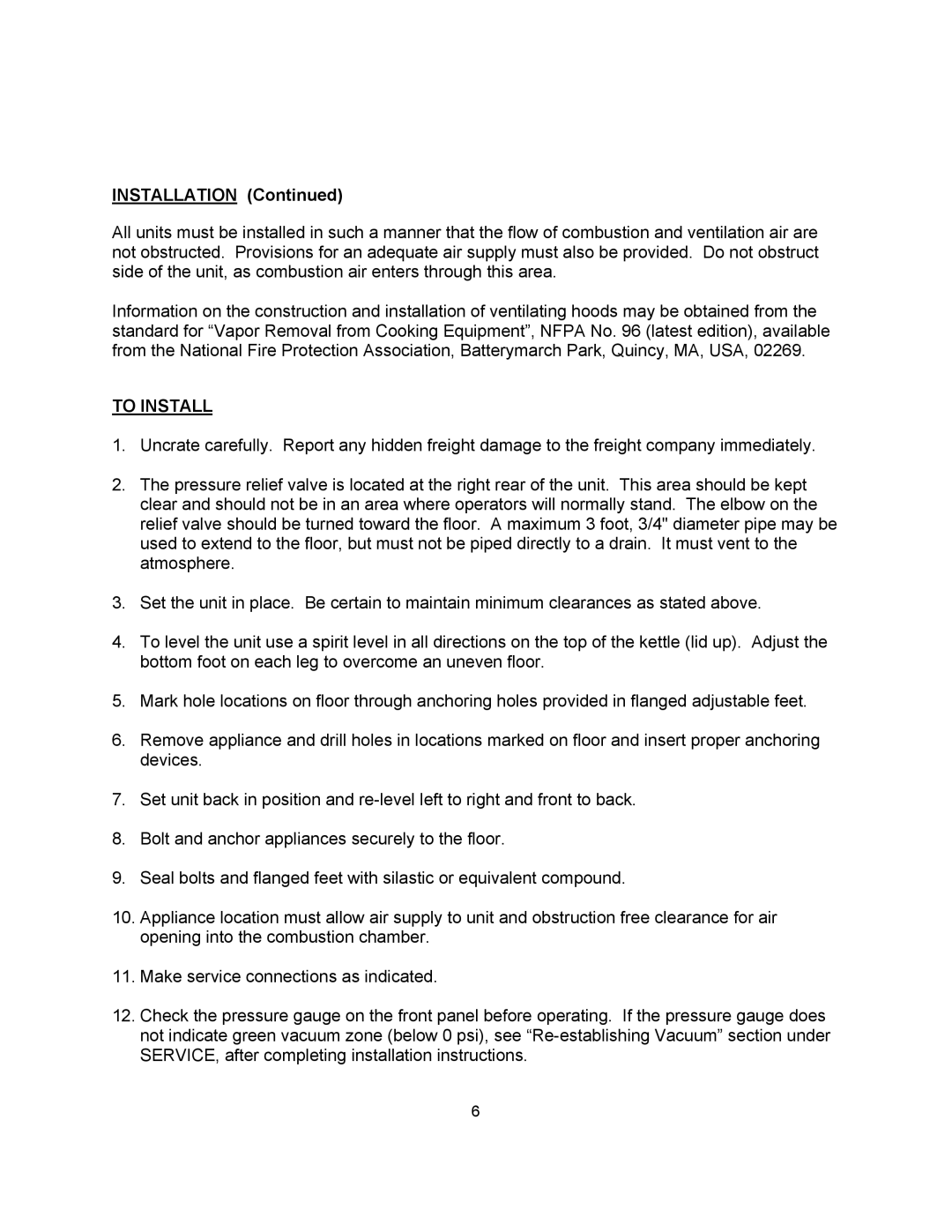INSTALLATION (Continued)
All units must be installed in such a manner that the flow of combustion and ventilation air are not obstructed. Provisions for an adequate air supply must also be provided. Do not obstruct side of the unit, as combustion air enters through this area.
Information on the construction and installation of ventilating hoods may be obtained from the standard for “Vapor Removal from Cooking Equipment”, NFPA No. 96 (latest edition), available from the National Fire Protection Association, Batterymarch Park, Quincy, MA, USA, 02269.
TO INSTALL
1.Uncrate carefully. Report any hidden freight damage to the freight company immediately.
2.The pressure relief valve is located at the right rear of the unit. This area should be kept clear and should not be in an area where operators will normally stand. The elbow on the relief valve should be turned toward the floor. A maximum 3 foot, 3/4" diameter pipe may be used to extend to the floor, but must not be piped directly to a drain. It must vent to the atmosphere.
3.Set the unit in place. Be certain to maintain minimum clearances as stated above.
4.To level the unit use a spirit level in all directions on the top of the kettle (lid up). Adjust the bottom foot on each leg to overcome an uneven floor.
5.Mark hole locations on floor through anchoring holes provided in flanged adjustable feet.
6.Remove appliance and drill holes in locations marked on floor and insert proper anchoring devices.
7.Set unit back in position and
8.Bolt and anchor appliances securely to the floor.
9.Seal bolts and flanged feet with silastic or equivalent compound.
10.Appliance location must allow air supply to unit and obstruction free clearance for air opening into the combustion chamber.
11.Make service connections as indicated.
12.Check the pressure gauge on the front panel before operating. If the pressure gauge does not indicate green vacuum zone (below 0 psi), see
6
